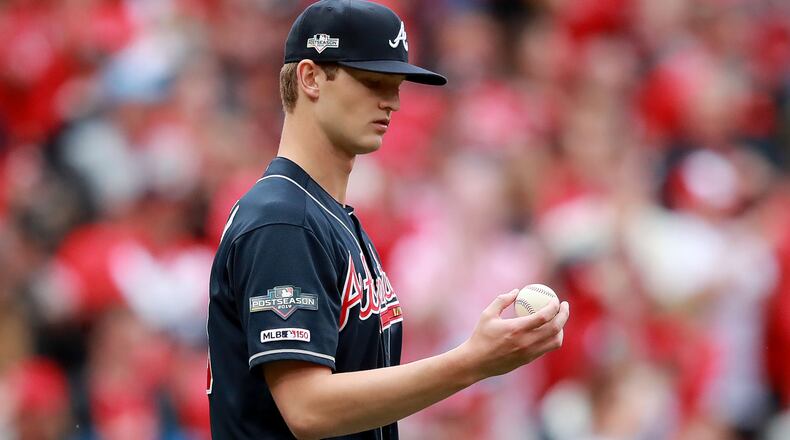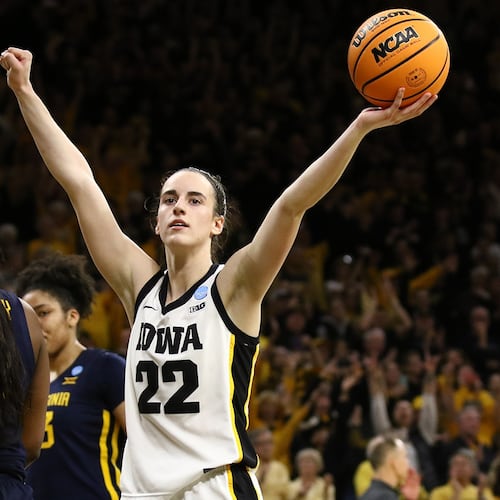The Atlanta Braves have designated Dallas Keuchel for a key assignment – he’ll start Game 4 of the NLCS, a potential clinch game for his team. He’ll do it on three days’ rest, one short of the norm.
They considered using Julio Teheran, the club’s Opening Day starter for six years running. They thought about doing a bullpen game – starting with two innings of, say, Josh Tomlin and then working in increments from there. (They didn’t consider Max Fried, who entered the series as the presumptive Game 4 pitcher but has worked all three games in relief.) The only scenario that made sense was Keuchel.
Teheran is on the roster only because Chris Martin hurt himself between the bullpen and the mound in the eighth inning of Game 1: If you didn’t trust the guy enough to include him among your list of 25, why give him a possible clincher? A bullpen game makes sense if you have no other options, and the Braves did. They had, and have, Keuchel.
He threw 74 pitches, a light load, over 4-2/3 innings in Game 1, a stint abbreviated not because the Cardinals hit him hard — they had five hits and one run — but because manager Brian Snitker just felt it was time. Keuchel didn’t exactly dazzle that day, striking out nobody and walking three. But he was good enough to give his team a chance to win, Job 1 for any starting pitcher.
Said Snitker, speaking here Monday morning: “He's ready. We talked about it yesterday and I think once everybody settled on it, he's good to go. He's gassed up. And again, I said that when we started the series: That's why we got him. I feel good about him going out there today.”
There have been many stories in these three entertaining games, but the biggest is the Braves’ starting pitchers. Over the regular season, this rotation had an ERA of 4.20, seventh-best in the 15-team National League. The Cardinals’ starters had an ERA of 3.78, third-best.
In this NLDS, the St. Louis rotation has been excellent. Its ERA is 1.83, the Braves having scored four runs off it. The Braves’ starters have been fabulous — an ERA of 0.83, yielding 10 hits and three walks over 18-2/3 innings. The Cardinals have scored two runs off starting pitchers, neither on a hit. (The first was on a groundout, the second on a sac fly.)
Yeah, it’s a teeny-tiny sample size, but this is the rotation the Braves waited all season to see. Much went wrong. Mike Soroka, Mike Foltynewicz and Kevin Gausman began the regular season on the injured list. Sean Newcomb was relegated to the bullpen. Foltynewicz was demoted to Gwinnett. Gausman was waived. Keuchel wasn’t signed until June.
At the All-Star break, the Braves’ rotation had the 11th-best ERA among NL clubs. It was a wonder — and a tribute to their hitting — that they were in first place, but you knew that for this team to do anything come October their starters would have to do better.
It’d be tough to do better than Foltynewicz and Soroka did in Games 2 and 3. For those of a certain age, this was reminiscent of Steve Avery and John Smoltz against Pittsburgh in the 1991 NLCS — two youngish pitchers throwing the best games of their careers in the crucible of postseason. And this, not to put too fine a point on it, is the sort of pitching that can carry a team to the World Series.
One caveat: The Cardinals didn’t hit much over the regular season, and they’re hitting even less now. Six of their eight runs came against Luke Jackson and Mark Melancon in the calamitous eighth and ninth innings of Game 1. They’re batting .242 for the series; their OPS is .650. They have one home run. It’s reasonable to expect the Dodgers or the Astros or the Yankees — maybe even the Nationals — to make the Braves’ pitchers work a bit harder.
When this series began, it was possible to envision the Cardinals simply outpitching the Braves. That hasn’t happened yet. If it doesn’t happen today, it never will.
About the Author
The Latest
Featured


